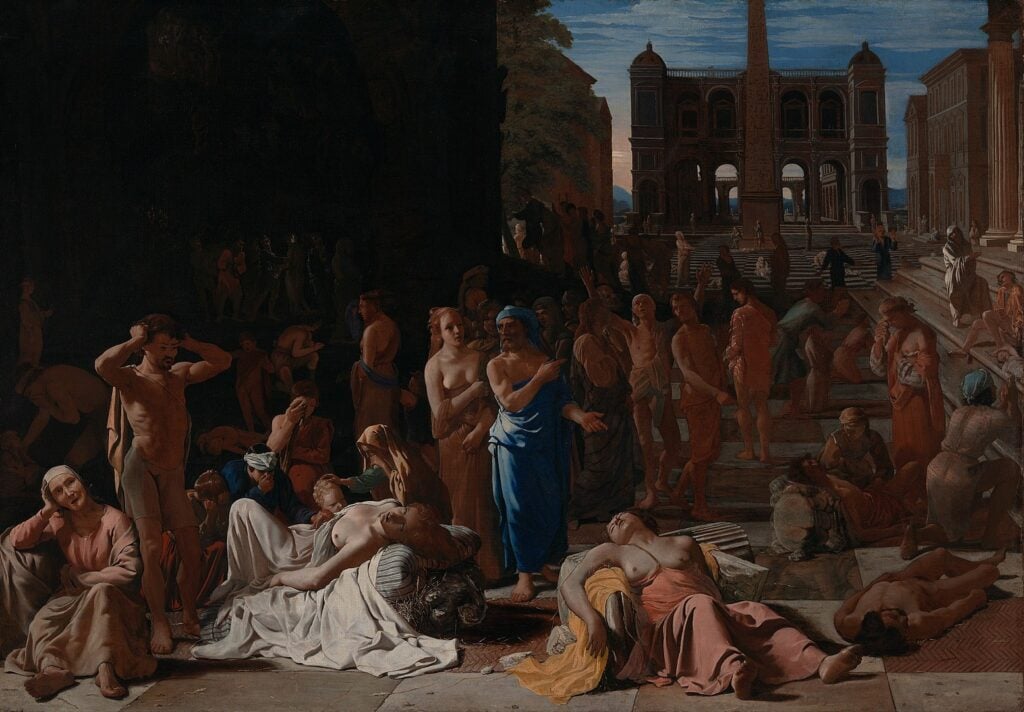

The ancient world suffered immensely from plagues. One of which, that of Athens in 430 BC, had long-lasting consequences for all of ancient Greece.
Forget the pristine Parthenon and the bustling agora for a second. Think chaos. Think of a city crammed behind its famous walls, desperate people from the countryside nearby pouring in, elbow-to-elbow, while Spartan soldiers were practically having a picnic just outside the gates. It was wartime, sure, but this wasn’t any war. The harsh reality of the Peloponnesian War, with an unseen public health horror about to slip through the city’s defenses, would shake Athens to its foundations.
The Plague had arrived.
We have to understand the setup to realise the magnitude of the problem. We are deep into the Peloponnesian War, that epic clash between Athens and Sparta. Pericles, Athens’ most inspiring leader, had this grand strategy: abandon the fields, bring everyone inside the massive fortifications of Athens known as the Long Walls, and let the navy and the treasury do the heavy lifting of confronting the savage Spartan warriors. Militarily, maybe it made sense on paper. In reality? It turned Athens into a pressure cooker, and humans were the meat. Tens of thousands of people suddenly jammed together in a confined city, designed for a much smaller population. Sanitation, already not great in ancient times (remember, ‘out the window’ was a common waste disposal method), couldn’t cope. The city was practically condemned to experience an epidemic, and it likely sailed undetected right into the busy port of Piraeus.
The disease took hold across the crowded city, and it was brutal. We know the grim details largely thanks to the historian Thucydides. Involving himself in this horrific situation, he didn’t just observe; he caught the plague and somehow survived to write about it. What he describes sounds like something out of a nightmare. People were suddenly struck by intense fevers, their eyes burning, throats and tongues raw and bleeding. Racking coughs led to agonizing vomiting and stomach cramps. Then came the skin rashes, the ulcers, and a relentless, maddening thirst that water couldn’t quench.
Thucydides wrote that people were in such agony that they couldn’t bear clothing or bedding, and many, driven half-mad by their immense pain, flung themselves into water tanks seeking any relief from this hell. Society itself in ancient Athens started reaching the edges of its very existence. Funeral rites, so important to the Greeks, were abandoned as bodies piled up, with the authorities simply not able to cope. A wave of lawlessness swept through parts of the population—why follow the rules if you could be dead tomorrow? Adding tragedy upon tragedy, even Pericles, the steady hand guiding Athens, died from it in 429 BC. Imagine the sheer terror gripping that city, once a superpower, now on the verge of total catastrophe.

So, what was this monster of a disease that tortured Athens at a time of war? This was the million-drachma question for centuries. Thucydides’s description is horrific and vivid, but it doesn’t neatly tick all the boxes for diseases we know today. Typhus, carried by lice in crowded conditions? Seems plausible. Smallpox? Measles? Maybe something more terrifyingly exotic that hitched a ride on a trade ship from far lands and reached the once-civilized and healthy Athens? The speculation was endless.
Fast forward to our time, and science offered a potential clue. Archaeologists digging in Athens’ Kerameikos cemetery discovered a mass grave dating back to the plague. DNA testing on the teeth identified Salmonella enterica Typhi, or typhoid fever. This is our most promising lead, though some experts still debate whether it tells the full story or if other viruses and diseases were involved. This difficulty in diagnosing after millennia emphasizes the medical knowledge we often take for granted today.
The Plague of Athens isn’t just an outbreak like so many others. It still resonates with lessons for modern epidemics and pandemics. Consider this: a crowded population, the rapid spread of disease, the breakdown of social norms under pressure, and the hunt for explanations (Thucydides mentions people blaming the Spartans for poisoning the water—does this sound familiar?). Additionally, there was a significant leadership challenge.
It’s a chillingly familiar pattern. The plague didn’t destroy Athens but bled it, weakening its spirit and manpower, and arguably sealing its fate in the long war against Sparta. Yet, Athens survived. Scarred, yes, but it carried on. Maybe that’s the real lesson from this tragic ancient ordeal. It reminds us how vulnerable even the greatest civilizations are, but also of our incredible, stubborn capacity to survive, thrive, learn, and rebuild, even after facing the worst situations imaginable.
